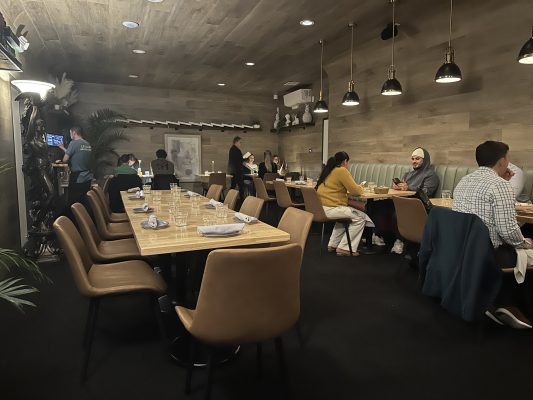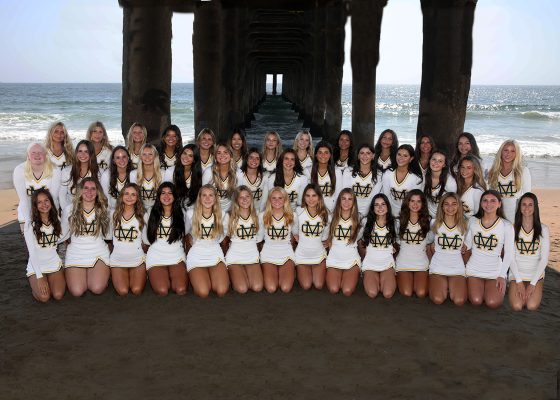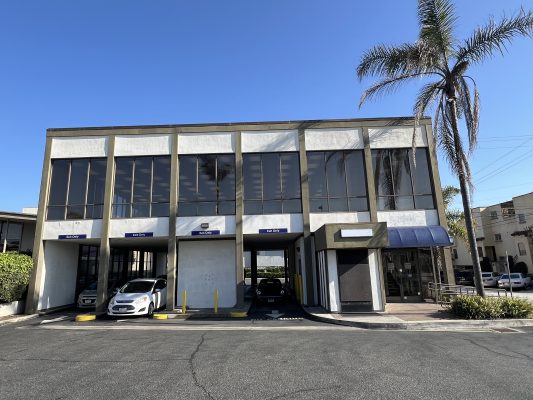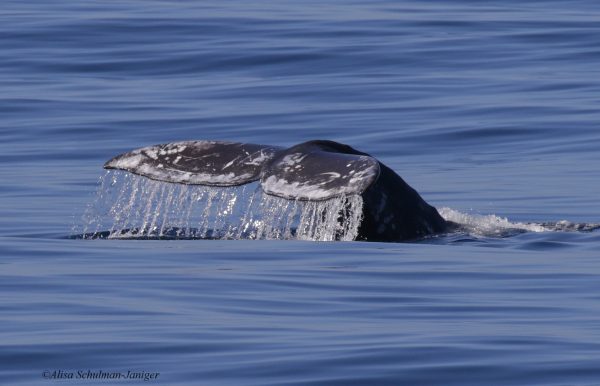
“Grounded,” with photographers John Divola and Zoe Crosher at ESMoA
In the old days, if you backed Dad’s car into a fire hydrant or flunked an easy math quiz, your parents might have “grounded” you for a few days. Or, if there was heavy fog and icy weather, flights were “grounded” until further notice. But “grounded” has another meaning at ESMoA, and it’s our job to figure out what it is. I’m referring to the title of the El Segundo museum/art lab’s newest exhibition, featuring two bodies of work, one by Zoe Crosher and the other by John Divola. Both L.A.-based photographers have earned a name for themselves, and the show, up through Sept. 22, is curated by Colin Westerbeck, who not incidentally is himself renowned and respected.

“Grounded” features a wall-length portfolio of photographs depicting airplanes about to land at LAX, taken from inside hotel rooms along Century Boulevard. These are the works of Zoe Crosher, and they’re somewhat reminiscent in theme of Ed Ruscha’s “Every Building on the Sunset Strip” or “Twentysix Gas Stations.”
The other wall-length portfolio shows busted-up houses, doors knocked askew as if someone has forcefully broken in. And in most cases that was what had happened. These were shot by John Divola in the mid-1970s, which is to say a little over 40 years ago or, to put it another way, at about the time Crosher was being born.
Colin Westerbeck has been around the block a few times. From 1986 to 2003 he was the Curator of Photographs at the Art Institute of Chicago. Later on he taught photography at UCLA and USC and wrote a column for the L.A. Times. From 2008 to 2011 he was the Director of the California Museum of Photography at UC Riverside. He’s also the author, with Joel Meyerowitz, of “Bystander: The History of Street Photography.”
“I had lived in New York for 20 years,” he says, standing outside of ESMoA on the opening night of “Grounded,” “and then I moved to Chicago and lived there another 20 years. And I thought, What the hell? I’ll go to Los Angeles. Maybe I’ll live another 20 years…”
And? “Except for a period of three years when I ran the museum at UC Riverside, I’ve never had a full-time job, but it’s been great. I’ve done all kinds of things that are wonderful here.”
Westerbeck met Divola when both were in Riverside, which is where Divola resides these days and where he has taught since 1988. “John and I really bonded out there and I did a couple of shows that I put him in.” Westerbeck first encountered Crosher’s work when he went with a tour group to the home of a private collector.
“It was not this work,” he says, referring to the LAX series. He chatted with the photographer and she gave him a copy of the publication with the hotel and airplane images. “I knew of John’s work on LAX, and I thought, that’s a perfect (match).” Not because they were similar, but largely because they were utterly at odds.
Westerbeck immediately thought of ESMoA because he’d once attended a party on the roof where, if one looked north, airplanes were taking off, and, looking south, one could see the Chevron refinery where presumably the jet fuel was being processed.
Anytime two images or sets of images are placed in proximity to one another a dialogue of sorts springs up between them.
“Right,” Westerbeck replies. “Two generations, a man and a woman. What was happening in the world of photography at the time that each of them did (their series) is about as dialectically different as is imaginable.”
31 one-night stands
Zoe Crosher has fond memories of hotel rooms: “My dad was a diplomat and my mother was an airline stewardess, so I grew up traveling and thinking about travel.” Naturally, airports figured heavily into the equation.

“So there I am in bed, and with this huge window it was like a movie for planes coming, one after the other. And I’m thinking about all the people arriving into L.A., based on this sort of ‘imaginary’ of L.A., this promise of L.A.”
Various ideas and concepts began to kick in, which we’ll get to in a moment. In the meantime, Crosher had this notion of documenting arriving planes, and doing so from each of the hotels on Century Boulevard.
“I would check in, stay the night, sometimes by myself, sometimes with friends, and I would shoot in the morning.” But she didn’t shoot indiscriminately as many photographers do today. Instead, she limited herself to five rolls of film, or 70 shots.
“It’s important to note that all the planes are coming in to land. This is an important distinction because it’s very much about the narrative” and how it relates to Crosher’s shooting from inside the hotel room and not from the patio or balcony.

A city can be mapped or graphed or diagrammed in multiple ways, from various perspectives, whether geographically, demographically, by household income or political affiliation, and so on. Crosher’s project, she says, is a “methodical and conceptual approach to mapping,” and one of many ways that Los Angeles can be conceptually visualized.
Crosher was thinking about what Los Angeles means as a city. She notes that “L.A. exists in what people see in movies (she mentions “La La Land” specifically) and read in books and hear from people.” This precedes their actual, physical arrival (hence the emphasis on planes landing, not taking off).
“So I was reading a lot about L.A., engaging with cinematic histories about L.A., and at the same time I was completely obsessed with this notion of the fiction of the documentary, that sort of personal notion of a truth, of a singular truth, of a photograph.”
We tend to think of photographs as objective, a neutral or dispassionate eye, but unless we’ve handed the camera to a robot there’s always some kind of subjective manipulation.
“And I was just thinking about how ‘documentary’ is a fiction, and that there are multiple truths. It’s a very postmodern approach.”
One may recall the five blind wise men attempting to describe an elephant based on which part of it (the ear, the trunk, the tail, the leg, etc.) they happened to be touching. L.A. is like that elephant, only it’s a bigger beast and many more of us have our hands on one small part of it, and from that one small part we are trying to deduce what the whole creature must be like.
Pillow talk
“I’m one of these people who gets to a hotel and unpacks everything and makes myself at home,” Crosher says. “And then there’s the opposite, people who don’t unpack anything and sleep with their clothes on… I find these places very liberating because it’s an unscripted space, it’s an undefined space.”
In some of the 31 prints we can see personal items and evidence that the room is being inhabited. In this sense, I say to Crosher, the series becomes a bit of a self-portrait as well.
“For sure,” she replies, pointing out that many of the images acknowledge her presence in how they are shot and what they include. “I would have these little hints, and sometimes I would shoot so that the beds were in the foreground to kind of look like a body, so there would be references to figures.” The viewer, then, is put “in a space where something has happened or will happen,” and so he or she becomes part of “that potential narrative.”
The narrative that runs through her work, the focus on the “imaginary,” may remind us of Cindy Sherman. Presumably Crosher has many influences and photographic ancestors, but for me that’s who comes to mind.

“I’ve been waiting for somebody to do this show,” Crosher says. “So when Colin came up with it, and then this whole history of being in El Segundo and being near the airport, it’s like serendipity.”
And, of course, if we step outside the building…
“We see the planes.”
Breaking, entering, and shooting
John Divola has been recognized as one of L.A.’s most prominent photographers. He’s received fellowships from the National Endowment for the Arts, and a Guggenheim Fellowship in 1986. For his “Zuma Beach” series he entered deserted homes, spray-painted, and then photographed the scene with a view out towards the ocean. Among his compelling bodies of work we find “As Far as I Could Get,” in which he set the timer on his camera for 10 seconds and then beat a fast retreat on foot. “Dogs Chasing my Car in the Desert” is just that, two velocities captured in one frame. He’s also been a long-time instructor at UC Riverside.
As for his “LAX Site” series now on view at ESMoA…

He’s referring to the homes that were to be demolished or removed when the airport expanded.
Divola’s initial work, such as “Untitled (Man Watering Lawn)” and “Untitled (Young Woman on Sidewalk),” from the period of 1971-73, are fairly conventional and exactly as described, but then we see that sense of desolation-in-paradise in the 1975 work, “Los Angeles International Airport Noise Abatement Zone Exterior View B”.
“And then at one point I got really interested in observing the forced entries where people would break in.” Divola says that the airport authority would be onsite cleaning up the area from Monday through Friday, but come Friday afternoon the kids would show up and break in again.
“I would go (there) over the weekend and document where they broke in, and my interest was primarily more esthetic than social at the time. When I was painting in houses it was my own gesture in relation to what was there. Often there were other gestures… the gesture of the architect, the gesture of the people who lived there, the gesture of the person who hits a hole in the wall.

“And so,” summing up what motivated him, Divola says that “I was interested in that relationship between gesture, abstraction, and specificity. I’m not uninterested in it having a certain kind of social echo to it, but that’s not the primary, central interest of mine. Mine’s a little more esoteric, art-oriented and maybe existential.”
The two bodies of work, Divola’s and Crosher’s, while starkly different, do orbit the same sun, which in this instance is the incidental but sociological history and legacy of LAX, and as Colin Westerbeck aptly noted, ESMoA is the perfect venue for this exhibition.
Grounded is on view through Sept. 22 at ESMoA, 208 Main St., El Segundo. Hours, Thursday from 1 to 8 p.m., Friday and Saturday from 10 a.m. to 5 p.m. (424) 227-1020 or go to esmoa.org. ER











